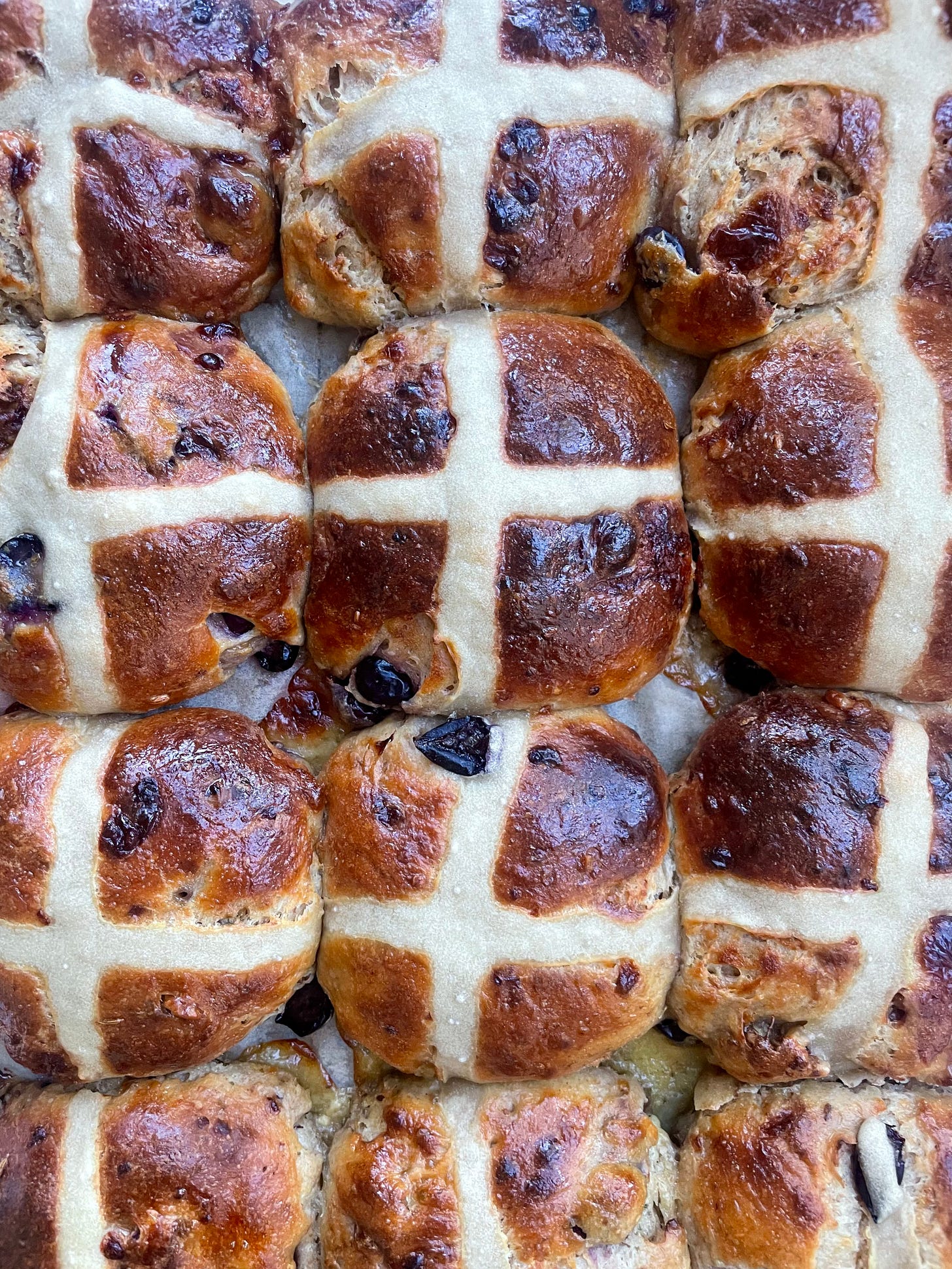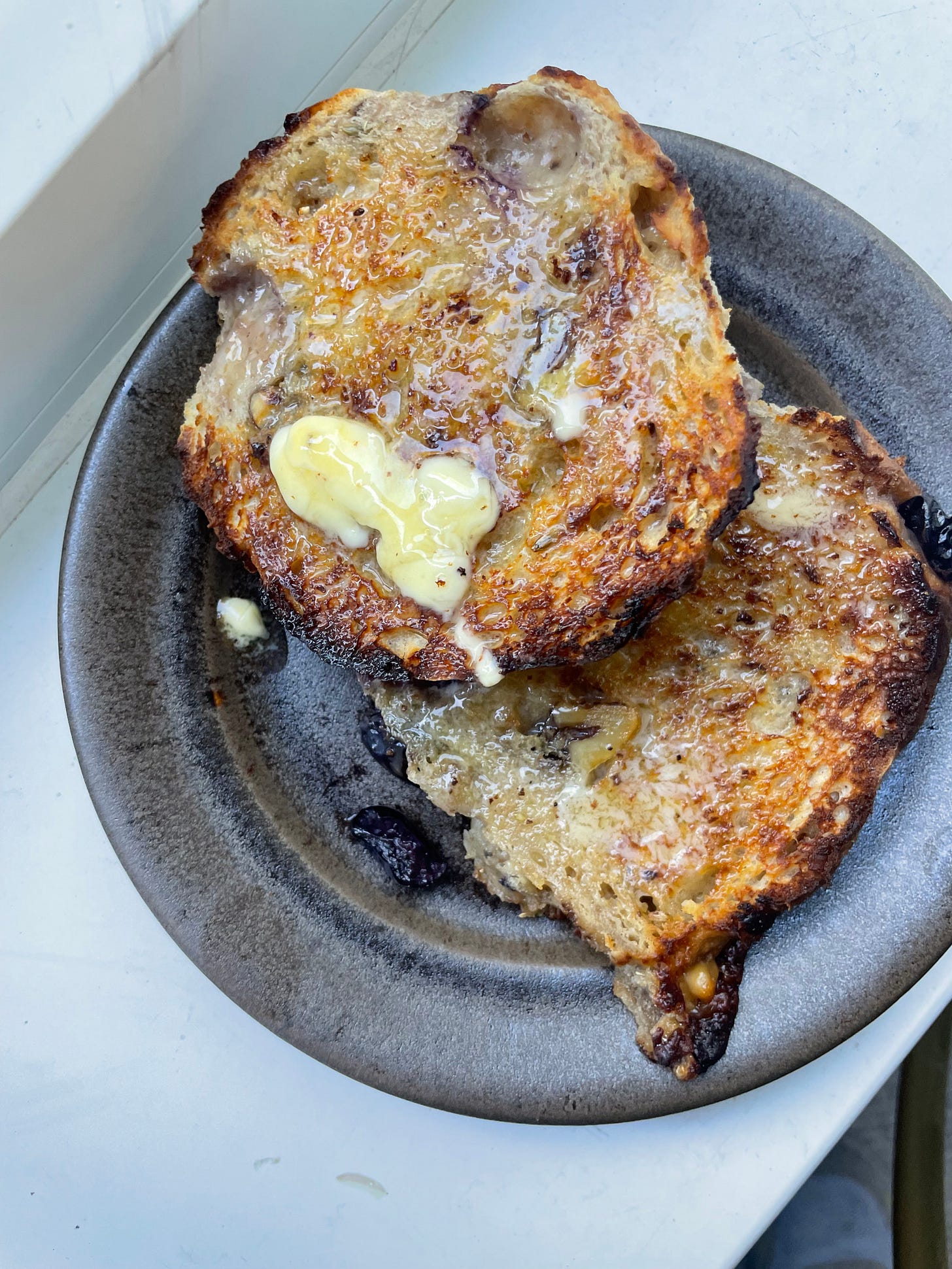Hello!
With Easter quickly approaching, I figured it was time to get myself in gear and work on my hot cross bun recipe. I experimented with a few last year, but my all time favourite was, in fact, a savoury hot cross bun.
This recipe is based on a milk bread, using a roux at the base of the dough for ultra fluffy buns. This is called tangzhong, and is basically a way to gelatinise and cook a small portion of the flour with a liquid as a way to introduce more hydration to your dough. In this instance, I’ve used crème fraîche rather than water or milk, as I wanted these buns to be super enriched and fluffy. I’ve also used a portion of einkorn flour for extra flavour - I think most doughs benefit from the addition of an alternative grain or wholemeal, rather than 100% white flour.
Moving on to the mix ins, and I’ve opted for Stichelton as the main flavour. Using really good cheese has become more of a priority for me in baking reccently. Towards the end of last year, I had the pleasure of doing a number of pastry pop ups at our favourite local cheese and wine bar. Besides meeting so many lovely people, I also learned a little about cheese and how revolutionary it can be for baking. I’m ashamed to admit I’d always used supermarket cheese for baking purposes, as the expense of good cheese didn’t feel justified when not on a cheese board. Of course, it does add to the already significant expense of baking, but it also levels it up in a way the supermarket stuff just can’t.
It’s also a great way to support proper cheese producers, who work hard to make beautiful products that we can enjoy. For this recipe, I chose Stichelton which is a punchy but ultra creamy blue cheese - I thought the savoury, marmitey flavour would be perfect in a hot cross bun (think M&S marmite and cheddar), with the creamy texture melting into the dough to enrich it further. Produced in Nottinghamshire by a man called Joe Schneider and his team, Stichelton is largely produced in exactly the same way as a Stilton would be. The main difference, and the reason it can’t be called a Stilton, is that he uses unpasteurised milk. Using raw milk produces a complex, delicious cheese that a pasteurised milk-based, mass-produced cheese, simply wouldn’t match.
Of course, you could exclude the other add-ins and go full Stichleton, but I wanted to turn this into a bit of an all-in-one bun. So, I’ve added toasted walnuts for crunch, and grapes tossed in fennel seeds and a touch of sugar which turn jammy when baked. The quantity of mix-ins can, I find make it a little tricky to shape these into buns, which may result in crevices and cracks in your baked buns. But, to be quite honest, who cares? These are delicious, and even better when toasted to get cheesy little pockets of punchy cheese.
Stichelton, Grape & Walnut Hot Cross Buns
Makes 12 large buns.
This recipe is based on using a stand mixer, but I have included some guidance on making by hand too. When it comes to proofing times, these will vary according to the temperature of your kitchen. Mine was relatively cool and so each proof took closer to two hours. If you have a toasty spot for your dough, use this to speed things up a little, but most of all, remember that bread takes time!
(For the roux)
120g crème fraîche
50g strong white bread flour
(For the buns)
150g black grapes, cut in half width ways
30g caster sugar
1 tbsp fennel seeds
300g strong white bread flour
150g einkorn flour
10g salt
10g dried yeast
250g whole milk
2 eggs (100g)
80g unsalted softened butter
75g walnuts, toasted and roughly chopped
200g Stichelton, crumbled
(To finish the buns)
60g strong white bread flour
60g whole milk
1 egg, beaten with a pinch of salt
Method
Begin by making your roux. Heat the crème fraîche in a small saucepan until melted, then add the flour and whisk over the heat for about 1 minute until you have a thick paste.
Tip into a bowl and allow to cool.
Meanwhile, lightly crush the fennel seeds in a pestle and mortar, then toss the grapes, sugar and fennel seeds together and allow to sit for 30 minutes.
In the bowl of a stand mixer (or a large bowl), add the strong white bread flour, einkorn flour, salt, yeast, and sugar.
Gently warm the milk until just warm - about 37°C. Add in the eggs and roux and whisk together.
Pour the liquids into the dries and mix on medium speed with the dough hook for around 8-10 minutes. The dough should have come away from the sides and bottom of the bowl, and look like a nice smooth dough. Allow it to rest for 5 minutes, then check it’s ready with the windowpane test - take a portion of the dough and stretch it. If it stretches thinly enough to see the light through without breaking, you’re ready to move on to the next step.
If you aren’t using a stand mixer, use a dough scraper to mix the dries and wets together in the bowl. Once combined with no dry bits visible, tip it onto the surface and use the slap and fold method. Pick the dough up gently from underneath, slap the bottom onto the work surface, and fold the top over. Repeat this motion, using the dough scraper to shuffle your dough around and keep it nice and tidy. If you aren’t familiar with this technique, I point you in the direction of Richard Bertinet, the master of the slap and fold! Keep going until you have a nice smooth dough, then rest for 5 minutes and perform the windowpane test as above.
Next, add in the softened butter a chunk at a time. Mix for a further 5-10 minutes until all the butter has been incorporated and you have a smooth dough once again. Allow it to rest and perform the windowpane test again.
Finally, add in your mix ins - the fennel grapes, chopped walnuts, and crumbled Stichelton and mix until evenly distributed.
If doing by hand, roll the dough out lightly into a rectangle and smear the soft butter over, fold it in thirds like you would a sheet of paper for an envelope, then continue the slap and fold method as above for a further 10 minutes, or until you can successfully do the windowpane test. Roll out into a rectangle once again and sprinkle over the mix ins, then fold in on itself and do a few slap an folds to distribute the fillings.
Use a dough scraper to bring the dough together into a nice ball, then plop into your mixing bowl and cover with a damp tea towel. Leave this to proof for one hour, or longer until puffy and doubled in size. It should look nice and bubbly and active.
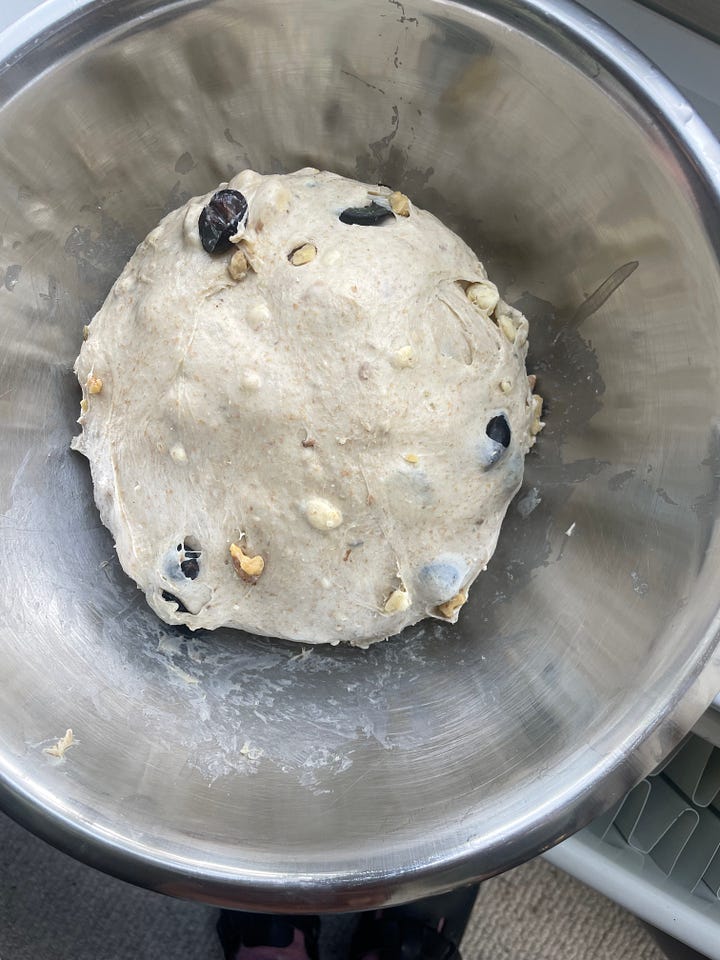
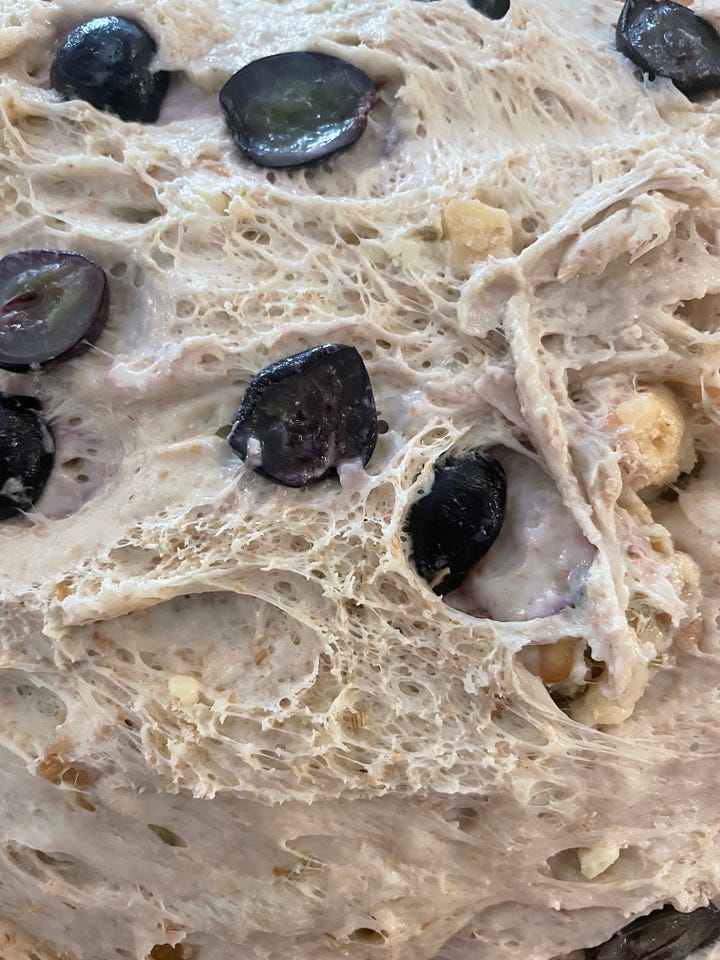
When doubled in size, tip the dough onto your surface and, using a dough scraper, separate into 12 portions of about 120g. These make big buns, but you could always make smaller buns if you wanted.
Lightly dust your work surface with flour and use your hand to roll each piece into little balls. You are aiming for the tops of each dough ball to feel nice and firm with a bit of tension.
Place these on a lined baking tray about 2-3cm apart. Cover with a damp tea towel and proof for about an hour, or until doubled in size.
Meanwhile, preheat the oven 200°C/Fan 180°C/400°F/Gas Mark 6.
Mix together the bread flour and milk until you have a paste, then put this into a piping bag.
When your buns are ready to bake, brush with the beaten egg and pipe crosses using the paste.
Bake for around 25 minutes until golden brown, turning in the oven after 15 minutes to get an even bake.
Allow to cool, then serve with lashings of butter!
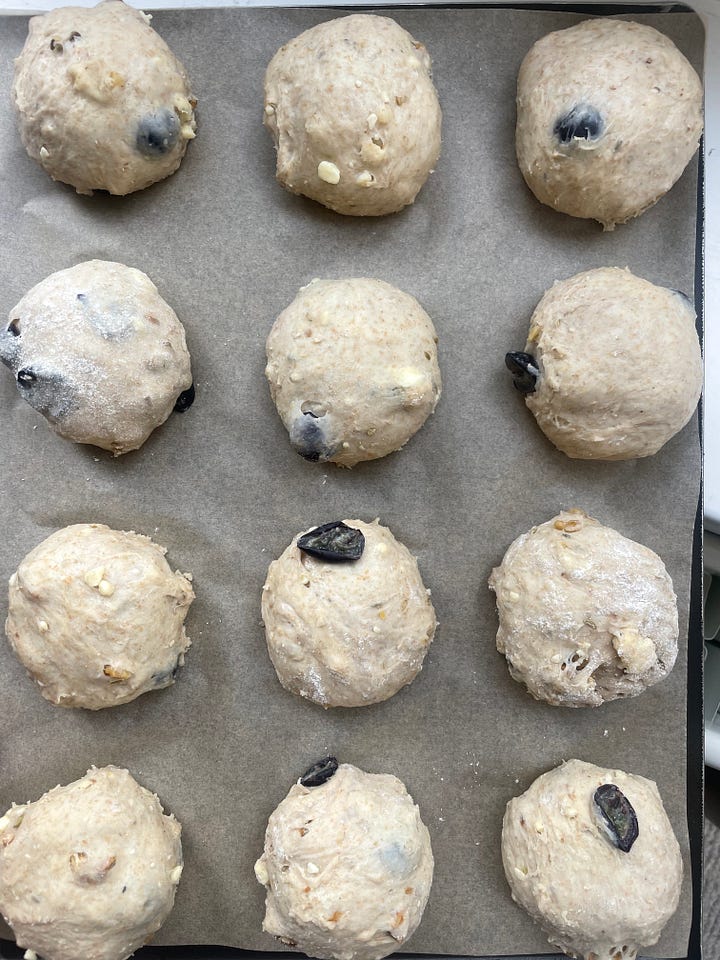
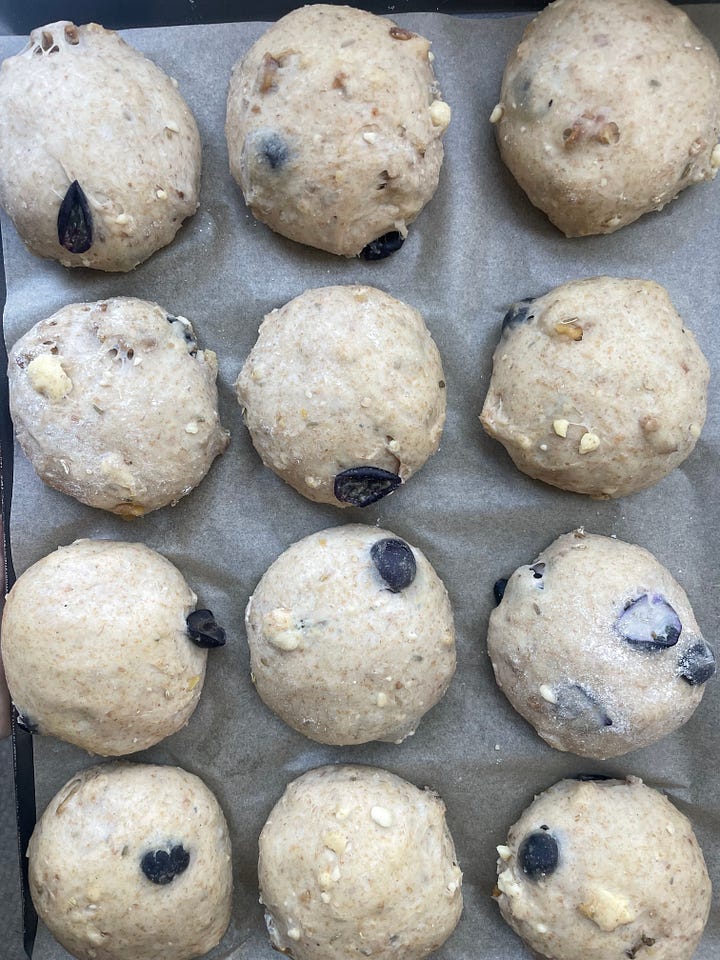


Happy Easter!
Annabelle x




